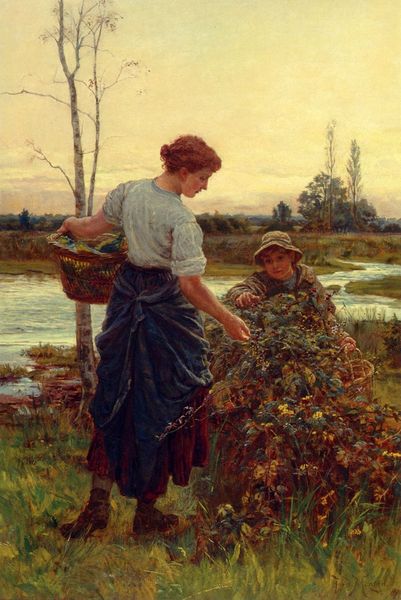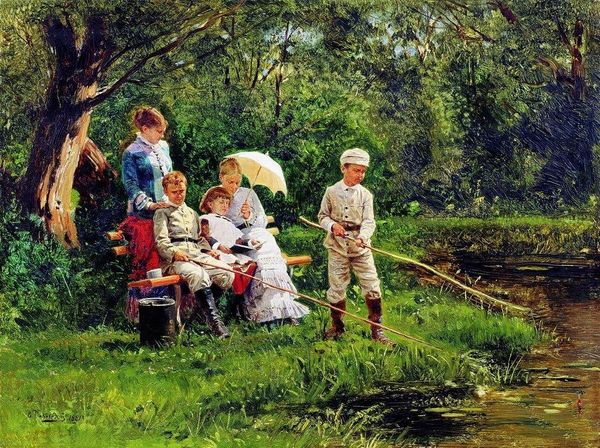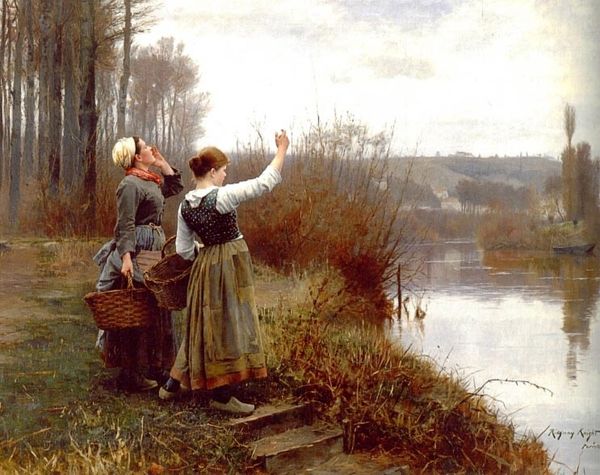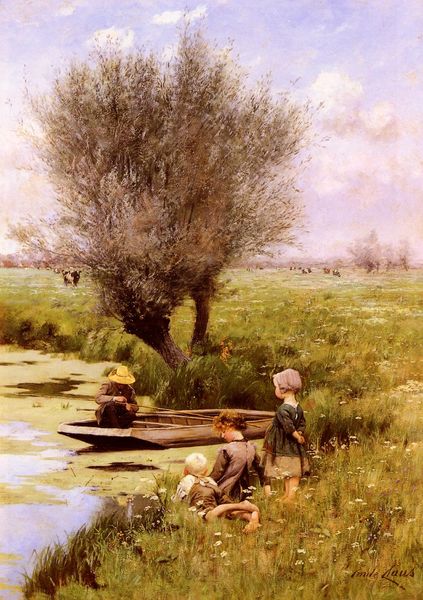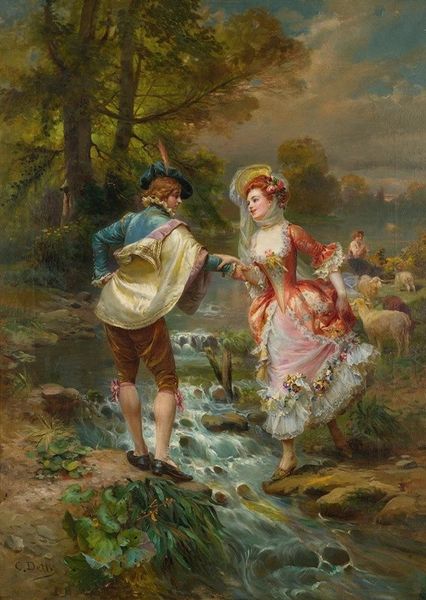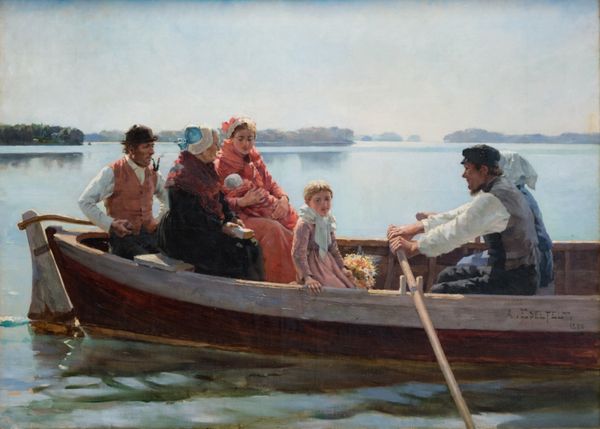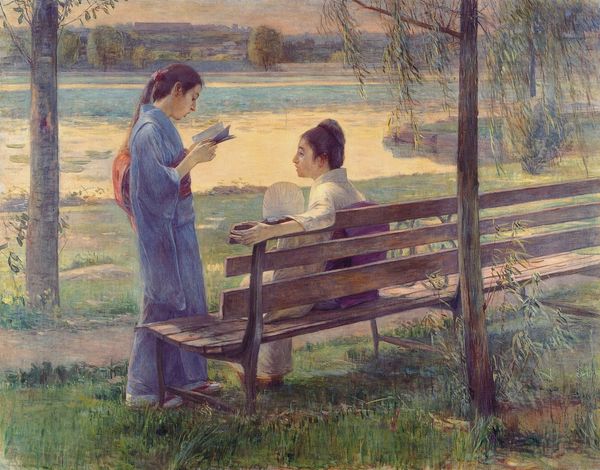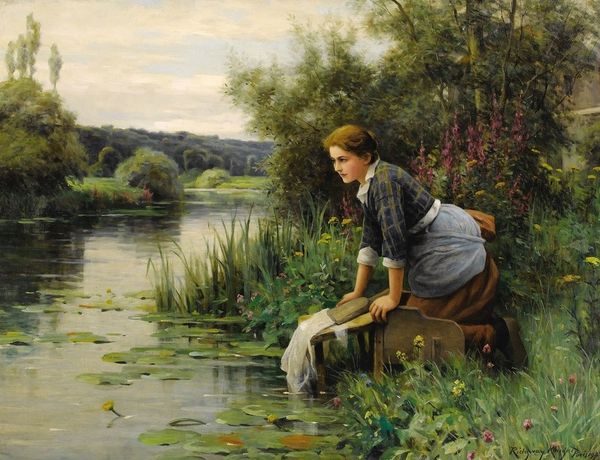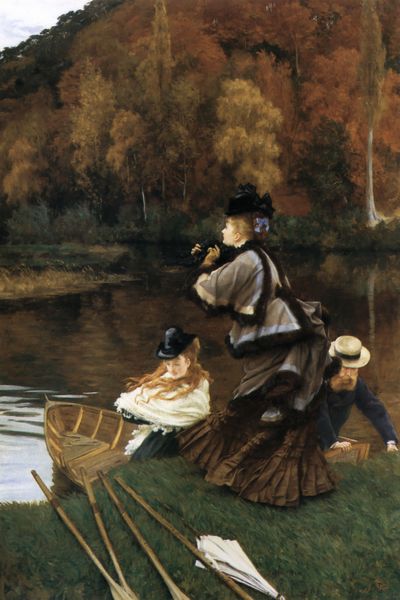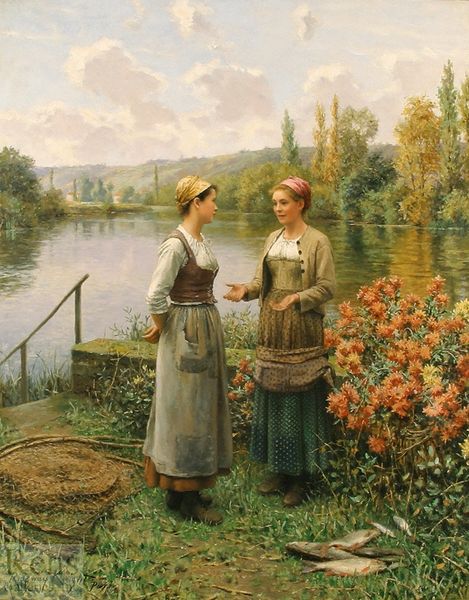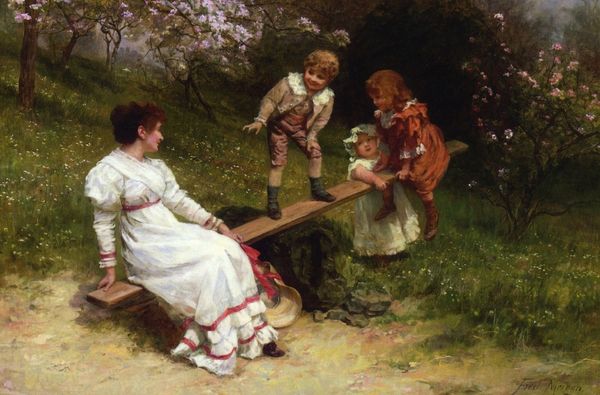
Copyright: Public domain
Editor: This is Frederick Morgan’s "Dainty Fares," painted in 1905 with oil on canvas. I’m really drawn to its nostalgic feel. It seems to capture a very specific moment in time, almost idealized. What historical context should we consider when looking at this scene? Curator: Well, the title itself suggests a societal structure, doesn't it? "Dainty Fares" implies payment, and in this context, the interaction between the working class boatman and the upper-middle-class family. Consider the late Victorian era, when this type of genre painting thrived; it often presented sentimental, idealized views of everyday life, but frequently reinforced class distinctions. Notice the contrast in dress, the father’s rough clothing versus the elegant attire of the mother and children. What message do you think these kinds of images were trying to send to the public? Editor: Perhaps that societal roles were clearly defined and comforting, maybe even natural? But that could also mask some harsher realities. Was it also about reassuring the rising middle class of their status? Curator: Precisely! Art institutions and patrons played a crucial role in shaping and reinforcing those ideologies. Paintings like these, often displayed in public exhibitions and reproduced in prints, circulated those notions widely. This type of image offered a specific, palatable vision of English society. Do you see how it also emphasizes domesticity and childhood innocence, deflecting attention away from potentially disruptive social issues of the period? Editor: It's interesting how the artist makes choices in terms of visual language to promote or reflect these power structures. Thanks for illuminating that for me. I definitely see more beyond just a sweet scene now. Curator: And I'm reminded that images, even seemingly benign ones, are rarely neutral.
Comments
No comments
Be the first to comment and join the conversation on the ultimate creative platform.
